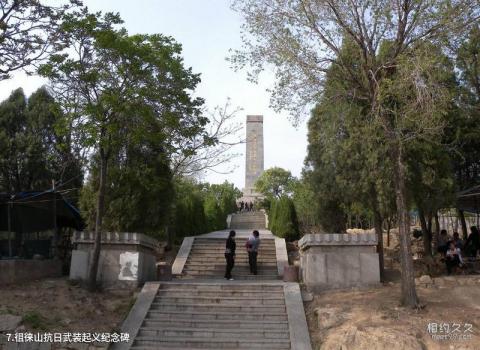
Introduction to the Culaishan Anti-Japanese Armed Uprising Monument: To commemorate the 50th anniversary of the Culaishan Anti-Japanese Armed Uprising, it was established by the Shandong Provincial People's Government in 1987. The monument is 23 meters high, of which the monument is 18 meters high and the base is 5 meters high. It consists of a total of 573 stones, which means to be armed and participate in the resistance against Japan. There are 5 sections and 50 steps in front of the monument. Among them, the 50 steps represent the 50th anniversary of the victory of the Anti-Japanese War; the five sections of the steps represent the five stages of the Anti-Japanese War. The title of the monument was inscribed by Marshal Xu Xiangqian, and the inscription was written by Mr. Wu Zhongqi, a nationally renowned calligrapher who was a veteran of the Culai Mountain Anti-Japanese Armed Uprising and captain of the Sixth Squadron of the Fourth Detachment of the Shandong People’s Anti-Japanese Guerrilla Force of the Eighth Route Army at that time. On January 1, 1938, the Shandong Provincial Committee of the Communist Party of China held a swearing-in meeting for the Culaishan Anti-Japanese Armed Uprising in front of the Culaishan Temple (Sichan Temple) and announced the establishment of the "Fourth Detachment of the Shandong People's Anti-Japanese Guerrillas of the Eighth Route Army", which started the revolution in Shandong Province. The first shot of the Anti-Japanese War. At that time, more than 160 people participated in the uprising. After the uprising, in order to welcome the anti-Japanese troops from Xintai and Laiwu, the troops moved to Guanghua Temple and carried out anti-Japanese struggles in the surrounding area, contributing to the establishment of the anti-Japanese base area in central Shandong. This monument is located on Ma Tou Mountain, 500 meters east of Xiyuan Gate in Culai Mountain.
